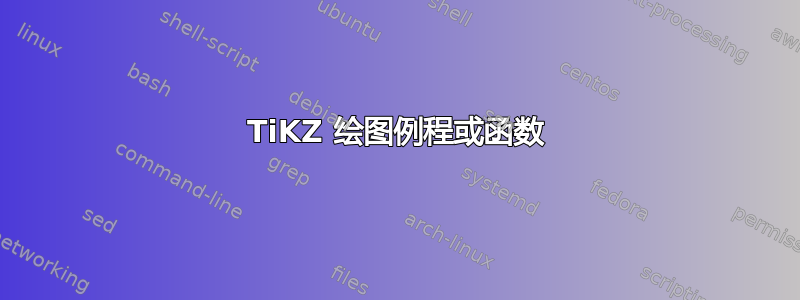
假设我想在 TiKz 中定义一个函数画一只眼睛:
\begin{tikzpicture}
%eye
\pgfmathsetmacro{\eyeSize}{1}
\pgfmathsetmacro{\ex}{0}
\pgfmathsetmacro{\ey}{1}
\pgfmathsetmacro{\eRot}{-10}
\pgfmathsetmacro{\eAp}{-55}
\draw[rotate around={\eRot:(\ex,\ey)}] (\ex,\ey) -- ++(-.5*\eAp:\eyeSize)
(\ex,\ey) -- ++(.5*\eAp:\eyeSize);
\draw (\ex,\ey) ++(\eRot+\eAp:.75*\eyeSize) arc (\eRot+\eAp:\eRot-\eAp:.75*\eyeSize);
% IRIS
\draw[fill=gray] (\ex,\ey) ++(\eRot+\eAp/3:.75*\eyeSize) % start point
arc (\eRot+180-\eAp:\eRot+180+\eAp:.28*\eyeSize);
%PUPIL, a filled arc
\draw[fill=black] (\ex,\ey) ++(\eRot+\eAp/3:.75*\eyeSize) % start point
arc (\eRot+\eAp/3:\eRot-\eAp/3:.75*\eyeSize);
\end{tikzpicture}
这太长了!我该如何在 TiKz 中定义“函数”,以便可以调用某个函数\eye( \ex, \ey, \rotation, \eyeAperture )来制作眼睛?
答案1
像这样?
\documentclass[parskip]{scrartcl}
\usepackage[margin=15mm]{geometry}
\usepackage{tikz}
\begin{document}
\newcommand{\eye}[4]% size, x, y, rotation
{ \draw[rotate around={#4:(#2,#3)}] (#2,#3) -- ++(-.5*55:#1) (#2,#3) -- ++(.5*55:#1);
\draw (#2,#3) ++(#4+55:.75*#1) arc (#4+55:#4-55:.75*#1);
% IRIS
\draw[fill=gray] (#2,#3) ++(#4+55/3:.75*#1) arc (#4+180-55:#4+180+55:.28*#1);
%PUPIL, a filled arc
\draw[fill=black] (#2,#3) ++(#4+55/3:.75*#1) arc (#4+55/3:#4-55/3:.75*#1);
}
\begin{tikzpicture}
\eye{1}{0}{1}{-10}
\eye{2}{4}{0}{30}
\eye{0.5}{0}{-3}{135}
\eye{3}{4}{-4}{260}
\end{tikzpicture}
\end{document}

答案2
对汤姆的回答的补充。我加了pgfkeys一些东西
\documentclass[parskip]{scrartcl}
\usepackage[margin=15mm]{geometry}
\usepackage{tikz}
\makeatletter
\pgfkeys{/eye/.cd,
x/.code = {\def\eye@x{#1}},
y/.code = {\def\eye@y{#1}},
rotation/.code = {\def\eye@rot{#1}},
radius/.code = {\def\eye@rad{#1}}
}
\newcommand{\eye}[1][]{% size, x, y, rotation
\pgfkeys{/eye/.cd,
x = 0,
y = 0,
rotation = 0,
radius = 1
}
\pgfqkeys{/eye}{#1}
\draw[rotate around={\eye@rot:(\eye@x,\eye@y)}]
(\eye@x,\eye@y) -- ++(-.5*55:\eye@rad)
(\eye@x,\eye@y) -- ++(.5*55:\eye@rad);
\draw (\eye@x,\eye@y) ++(\eye@rot+55:.75*\eye@rad) arc (\eye@rot+55:\eye@rot-55:.75*\eye@rad);
% IRIS
\draw[fill=gray] (\eye@x,\eye@y) ++(\eye@rot+55/3:.75*\eye@rad) arc (\eye@rot+180-55:\eye@rot+180+55:.28*\eye@rad);
%PUPIL, a filled arc
\draw[fill=black] (\eye@x,\eye@y) ++(\eye@rot+55/3:.75*\eye@rad) arc (\eye@rot+55/3:\eye@rot-55/3:.75*\eye@rad);
}
\makeatother
\begin{document}
\begin{tikzpicture}
\eye[radius=1,y=1,rotation=-10]
\eye[radius=2,x=4,rotation=30]
\end{tikzpicture}
\end{document}



